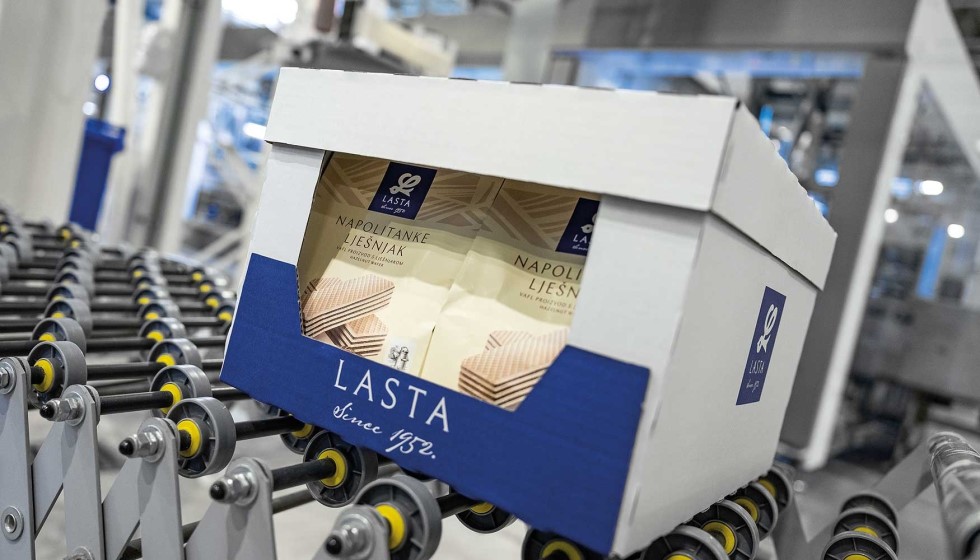Unless you are dedicated to the packaging industry, it is very possible that you do not know that there are three dimensions that make up the packaging of a product. This is composed of three levels that affect the way goods are packed and shipped. These are primary packaging, secondary packaging and tertiary packaging. Each type has a different function and they play their role in the packaging and shipping process.
Primary packaging
The primary packaging (also called retail or consumer packaging) is the one that is in direct contact with the product and the one that protects it the most from external agents.
The primary packaging varies according to the industry of the product in question. For example, in the pharmaceutical industry, the primary one is blisters containing a certain drug. In the beverage industry, it would be the bottle or can in which the beverage is stored. In the food, the plastic bag and the cardboard box that preserves your favorite cereals. In addition, the label of the bottles or cans is also part of the packaging.
Secondary packaging
This type of packaging is used to facilitate the transport or handling of smaller products in warehouses to group them into a single package. Provides extra protection to maintain and protect the integrity of the primary packaging. Normally, it is formed by different parts and components that guarantee the protection of the product: the box, the filling, separators, bubble wrap, paper…
The secondary packaging is also the box or envelope that we receive when we receive a shipment purchased online in an ecommerce and serves so that the product arrives in perfect condition at our home.
Tertiary packaging
Tertiary packaging, or transit, is the one used to group large quantities of goods to transport them from point A to point B. For example, from the warehouse to the point of sale. At this stage of logistics, the product is not treated as a unit as in the case of e-commerce shipments, but rather handled as distribution units.
The tertiary packaging facilitates such handling and the transport of large-volume goods and large and/or heavy loads in a safe manner. In addition to helping to prevent damage due to its high resistance, it facilitates the handling, storage and transportation of goods. An example of tertiary packaging is a sheathed pallet that allows the unitary transport of several cardboard boxes (secondary packaging) to make the shipment efficiently.
At Capsa, we have boxes for international shipments for companies from all types of industrial sectors, such as: beverage, food, automotive, industrial products, health and beauty, agri-food, pharmaceutical, and for all types of products, both light and heavy. Our offer of shipping boxes have been developed to meet a single objective: to grant the maximum protection to the contents. For this reason, our selection of international shipping boxes products is suitable for grouping products and to boost the performance of your logistics chain.
On our website, you will find container boxes with flaps and easy to assemble and the box palé with lids immobilize and protect the contents, optimize space, are easy to handle, stackable and stable, becoming the perfect packaging to accompany your product in long-distance imports or exports. With our boxes, your products will arrive at their final destination in perfect condition.
Why is every packaging important?
When creating a packaging strategy, it is important to keep in mind that the three levels of packaging will affect the preservation, the survival of the product and the footprint that the packaging leaves on your customers.
The primary packaging is the first thing that the consumer sees in certain contexts, such as on supermarket shelves. Therefore, it has an obvious function of branding and persuasion, since it can be decisive in the purchase decision in some cases. All the formal aspects of the packaging’s appearance matter: the logo, the size, the colors… Work on your brand’s packaging if you don’t want to leave your target indifferent; it’s a golden opportunity to bring personality to your product and make it stand out.
The role of secondary packaging is to protect the product during shipping and transportation of this until it reaches its destination. It is as necessary as the primary one for various reasons. On the one hand, choose a secondary packaging that is not resistant to unforeseen transport events, as it can be damaged during shipping (bumps), during storage or even while the customer is taking it home (rain). If the box was not of quality, this may cause the customer to receive his package in poor condition with a damaged product. As a manufacturer or brand, you have the responsibility to ensure that the product is received in perfect condition if you do not want the customer to make a claim for their purchase.
Benefits of choosing your packaging well
Choosing boxes that are easy to assemble and prepare will exponentially speed up your shipments, resulting in a much more efficient daily logistics. For example, at Capsa ® we offer a variety of boxes that optimize your logistics process, such as: quick assembly boxes and easy folding; as self-assembling boxes, which respond to the demands of ecommerce. In addition, they are complemented with a capsa 2in1 ® multifunction closure with special flaps for transporting and specific ones for storing. Likewise, there is the variant with 1 or double band of self-adhesive closure. The latter is perfect to allow a comfortable and safe return for the customer, without having to use a different packaging, so you will reduce excess, contribute to the environment and have a more reliable and comfortable reverse logistics in the eyes of your consumer.
In short, it is essential to find a balance of protection and visual attractions between the levels of packaging so that your products look great and are properly protected.
